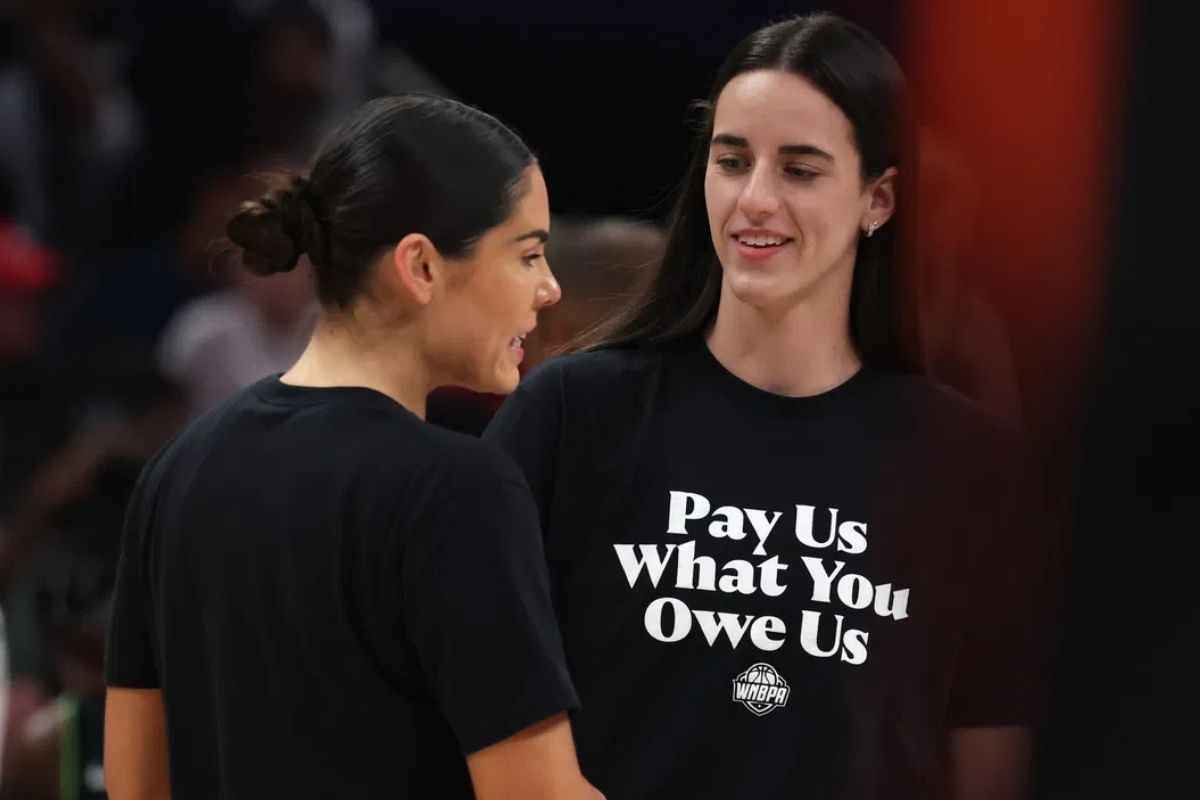
Imago
Credits: Imagn

Imago
Credits: Imagn
It was deceptively quiet in the WNBA sphere. After the WNBA and WNBPA agreed to extend the CBA negotiating period by a month, there wasn’t much chatter around the progression of the talks. Some expected the worst, others took it as a positive sign. The last reported proposal came about a month ago, when Front Office Sports revealed the WNBA was offering a $850,000 supermax and a veteran minimum of around $300,000.
Watch What’s Trending Now!
The WNBPA declined it. Some felt the WNBPA was taking too many risks, but the league has significantly sweetened its offer. The Associated Press has revealed the latest proposal from the WNBA that includes a maximum salary of $1.1 million. Let’s look at the exact impact of this new proposal and what the new CBA will look like.
ADVERTISEMENT
What Are the Proposed Salary Numbers Under the New CBA?
| Category | Current CBA (2025) | League’s latest proposal (approximately) |
| Max salary | $214,466–$ 249,244 max/supermax range | $1,100,000 |
| Min salary | 66,079 for 0–2 years; 78,831 for 3+ years | 220,000 league minimum salary in year one |
| Average salary | $102,249 | $460,000 |
How Will Salary Be Structured Under the New CBA?
While we don’t exactly know what the new salary structure will look like, we can judge from the wording of the report. “The WNBA’s latest collective bargaining proposal would include revenue sharing with a maximum salary of more than $1.1 million available to more than one player per team, growing each year,” the report from AP said. In the current structure, teams can have limited players on a super max contract, and it sounds like they are keeping that the same. In the current CBA, rookie contracts start at a lower amount than players with 2+ years of experience.
ADVERTISEMENT
“The new league minimum would be more than $220,000, with an average of more than $460,000. Those numbers would start in the first year of the deal for more than 180 players and increase over the length of the CBA,” the report further mentioned. It seems there is a revenue-sharing component, which is the players’ central point of contention. However, there is more nuance to that.

Imago
Aug 30, 2025; San Francisco, California, USA; Golden State Valkyries fans hold signs to “make the season long and the teams bigger” and “pay them what you owe them” during the fourth quarter against the Washington Mystics at Chase Center. Mandatory Credit: Kelley L Cox-Imagn Images
Even the past CBA allowed sharing revenue with the players, but with a condition. That conditional revenue has never been met. Even their last reported proposal that included a supermax salary of $750,000, was likely thwarted due to similar reasons. The players prefer a better revenue share than an absolute increase.
ADVERTISEMENT
The WNBA front office has expressed concern over a revenue share model. They feel that it could hurt the long-term stability of the league. Early reports indicate the league is still offering conditional, league‑office‑revenue bonuses with fixed annual raises, not the clean percentage‑of‑revenue model players want. However, things will get clearer in time, as the front office could have changed its mind, too.
ADVERTISEMENT
Who Benefits the Most From These Changes?
Everyone gets a major pay bump to start with. Veterans like Breanna Stewart, Jonquel Jones and Kelsey Mitchell can finally cash in after years of being underpaid. They are looking to get their deserved ‘bag’, so to speak, as many have signed with the newly minted Project B. So, they will get more than a 4 times increase in their WNBA salary. However, the one benefiting the most will be the next generation of players and the youngsters like Caitlin Clark and Paige Bueckers.
If the WNBPA has negotiated a revenue share and an increment with increasing profits, the salaries will continue rising throughout their careers. They will earn more in the long term and will have a better position in their next CBA negotiation down the line. Beyond just the current age, this new CBA rewards staying in the league for longer. Players who might otherwise wash out after a couple of near‑minimum years can now justify staying if they move into the 300k–500k band as established contributors.
ADVERTISEMENT
ADVERTISEMENT
ADVERTISEMENT

